GENERAL
Vintage vs. Modern Engagement Rings: Which is Right for You?

The truth must be told: choosing an engagement ring is a big deal, almost as big as popping the question itself! You’ve probably already asked yourself: should I go for a vintage or modern engagement ring? Both have unique vibes and perks, so it all comes down to what feels right for you.
However, there’s no harm in questioning what makes vintage and modern rings special and what are the differences between the two. That’s why we’re here! We’ll cover the pros and cons of each style and help you figure out which one best matches your and your loved one’s style and story. Let’s dive in and find your perfect engagement ring on brilliance.com/engagement-rings!
Vintage Engagement Rings
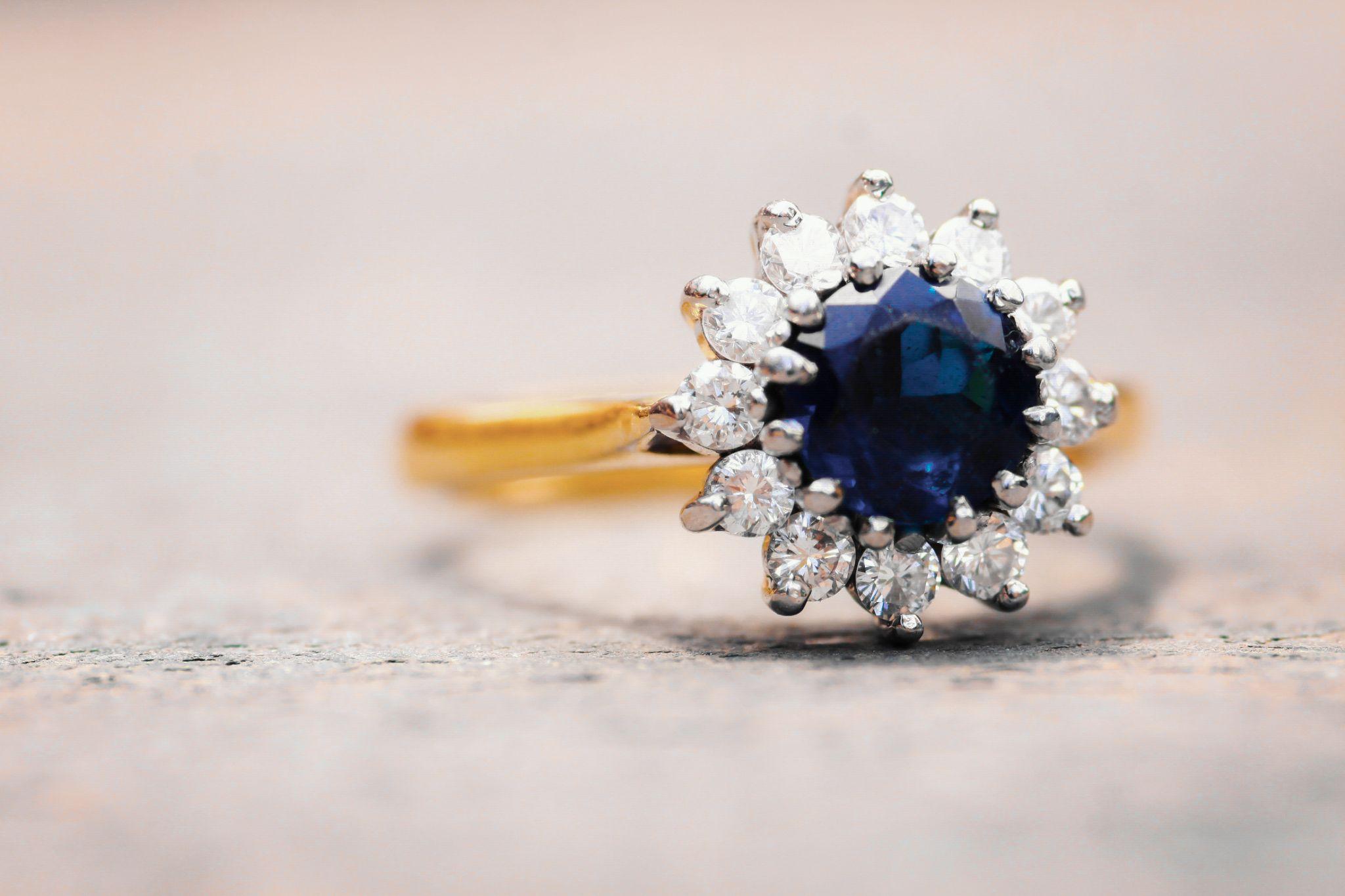
Vintage Engagement Rings
Vintage engagement rings are like stepping into a time machine or maybe a fantasy novel! They carry a sense of history and tell a unique story. It’s no secret that they feature intricate designs and details that give them a timeless charm.
Imagine this: a delicate lace-like filigree, milgrain edges, and romantic, old-world craftsmanship. One thing’s for sure: they will certainly make you feel like an elf living deep in the woods!
Each ring has its own personality, reflecting the era in which it was created. Wearing a vintage ring is like wearing a piece of history on your finger – it surely has incredible energy.
Popular Vintage Ring Styles
Let’s check out some of the most popular styles:
- Victorian: Floral motifs and elegant scrollwork echo the romance of the 19th century. Victorian rings are known for their intricate details and use of colorful gemstones like sapphires, rubies, and emeralds. This style is ideal for those who appreciate the beauty of nature and a touch of regal charm – Lord Of The Rings-themed proposal; anyone?
- Edwardian: Delicate and lacy, with lots of platinum and diamonds; Edwardian rings are perfect for a princess. They exude grace and sophistication, with intricate designs that look almost like fine lacework. These rings are perfect for those who want a ring that is both elegant and timeless and want to feel as if they’re spending eternity in enchanted castles!
- Art Deco: Now, this one may not be as enchanting and magical as the previous two, but it still counts as vintage – and its beauty is the reason it deserves to be on this list! We talk about geometric shapes and bold designs from the Roaring Twenties! These rings often feature sharp lines, contrasting colors, and a sense of daring elegance. The Art Deco style is perfect for those who love a bold, eye-catching look and are always ready to dance the night away!
Modern Engagement Rings
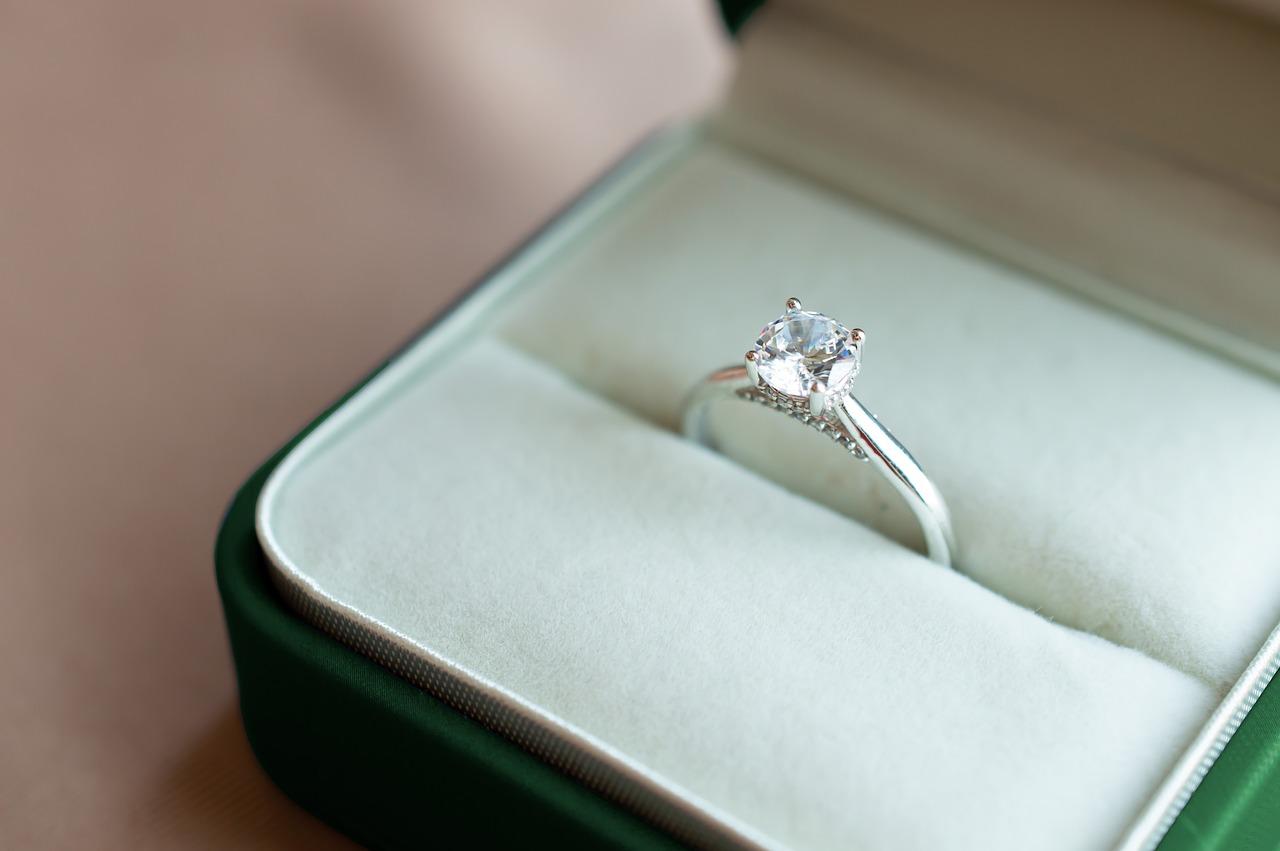
Modern Engagement Rings
Chick. Clean. Elegant. These rings are all about sleek lines and contemporary flair. They embrace simplicity and elegance, often featuring innovative designs and cutting-edge materials.
Think clean, minimalistic looks with a focus on the beauty of the gemstones. Modern rings often prioritize functionality and durability, making them perfect for everyday wear. With modern rings, less is often more, and the beauty of the materials truly shines through!
Popular Modern Ring Styles
- Solitaire: A single, stunning diamond that says it all. The solitaire is a classic choice that puts the spotlight on the diamond, highlighting its brilliance and beauty. This style is perfect for those who appreciate timeless elegance!
- Halo: A central diamond surrounded by a circle of smaller gems, adding sparkle and glamour. Like a moon surrounded by millions of stars!
The halo design enhances the size and sparkle of the center stone, creating a dazzling effect. It’s a great choice if you want maximum sparkle and glamour to the top.
- Three-Stone: Three diamonds symbolize the past, present, and future of your love – pretty sweet, isn’t it? This design is rich with meaning and adds a touch of romance to the ring. It’s perfect for those who want their ring to tell a story of their journey together!
Comparing Vintage and Modern Rings
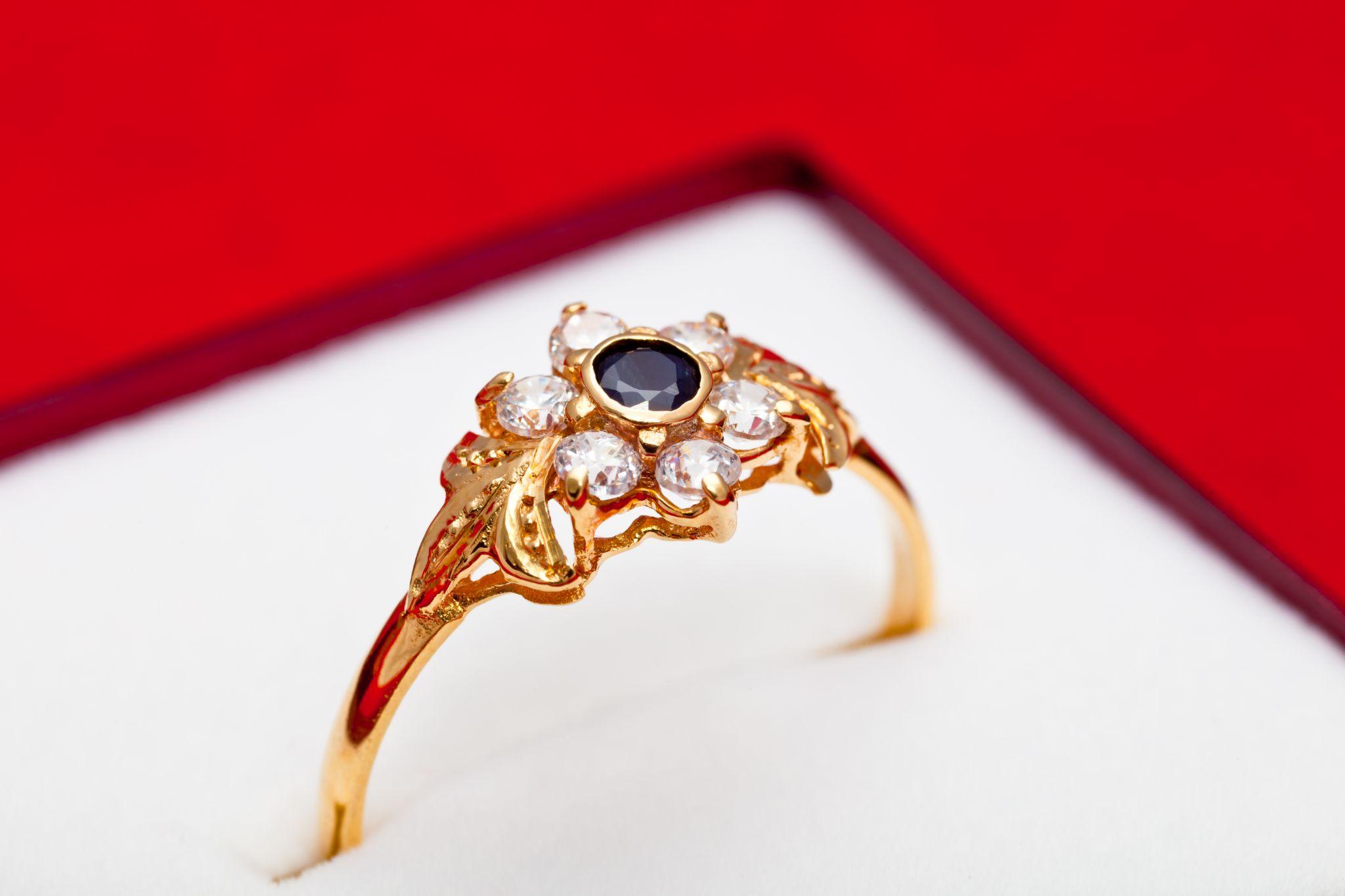
Comparing Vintage and Modern Rings
Now, let’s take a look at a direct comparison between the two styles:
Design and Looks
- Vintage Rings: Intricate and detailed, with a lot of They often feature unique settings and embellishments that reflect the era in which they were made. These rings are perfect for those who appreciate craftsmanship and unique designs.
- Modern Rings: Sleek, simple, and elegant. They focus on the beauty of the gemstone and often have a minimalist design. Modern rings are ideal for those who prefer a clean, contemporary look.
Symbolism and Meaning
- Vintage Rings: Rich with history and nostalgia. They often carry a sense of romance and timeless love, making them perfect for those who appreciate the past. Wearing a vintage ring can feel like honoring the love stories that came before yours. What a beautiful thought!
- Modern Rings: Represent contemporary love and style. They are ideal for those who prefer a modern and stylish look. A modern ring can symbolize a fresh, new beginning and the love that is uniquely yours! That’s also a perspective to think about, don’t you agree?
Cost and Value
- Vintage Rings: They can vary widely in price depending on the era and condition. They can be more affordable if you find a great deal, but rare pieces can be expensive. Be prepared to spend time searching for the perfect vintage ring. Think of it as your little hunt to the past!
- Modern Rings: Generally more predictable in price, based on the materials and design. Customization options can affect the price, but they are usually straightforward. Modern rings offer a wide range of options to fit different budgets.
Customization Options
- Vintage Rings: These are limited to the existing designs, though some customization is possible. You might be able to alter certain aspects, but major changes are often not feasible. Vintage rings are perfect for those who want a unique piece with a bit of history.
- Modern Rings: Highly customizable, from the gemstone to the setting. You can create a ring that perfectly matches your vision. Modern rings offer endless possibilities for personalization, which can be perfect if you’re looking for a unique design!
Choosing the Right Ring for You
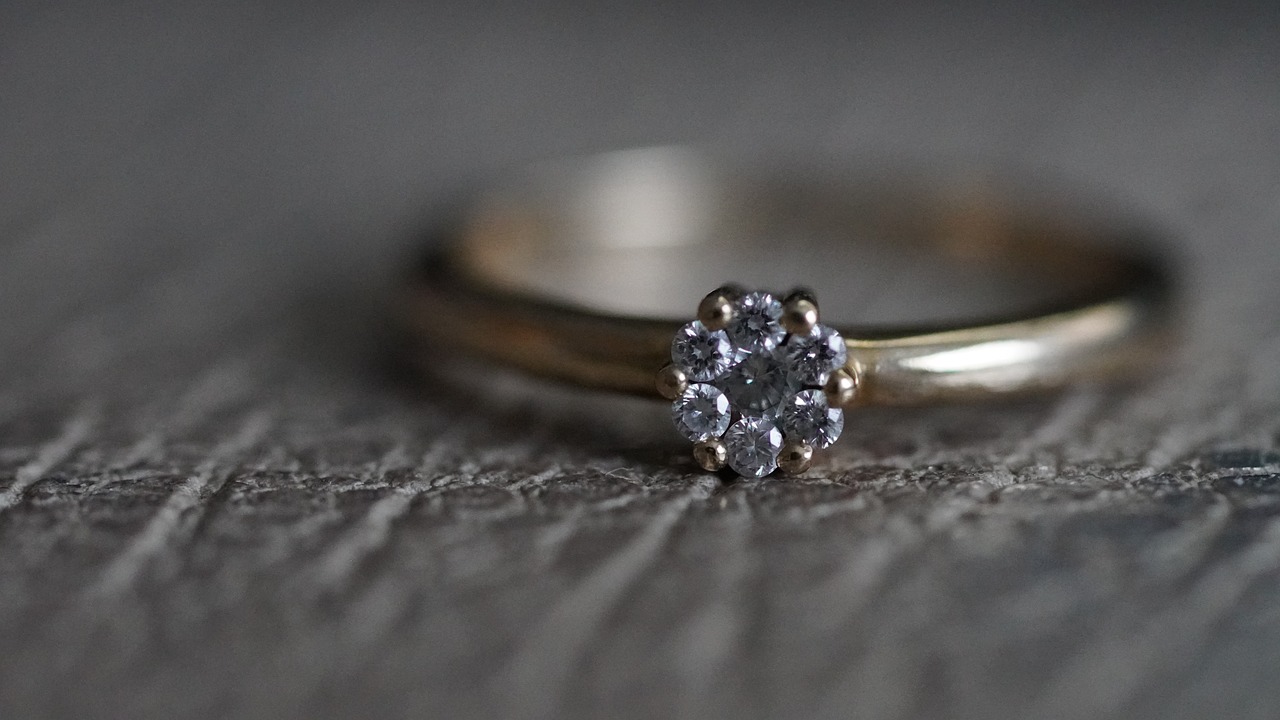
Choosing the Right Ring for You
After all, it all comes down to what makes you feel right and what fits your everyday needs. Here are some things to take into consideration:
Personal Style and Preferences
Think about your personal style. Do you love the charm of the past, or are you drawn to modern elegance? Turn around and look at the things you surround yourself with.
Your engagement ring should reflect your unique taste and personality. Consider what makes you feel special and what resonates with your style. And never, ever let anyone else affect your choice! It’s supposed to be on your finger for the rest of your life, so the choice should be solely yours!
Lifestyle Considerations
Consider your lifestyle. If you lead an active lifestyle, a durable modern ring might be more practical. If you appreciate vintage charm and don’t mind a bit of extra care, a vintage ring could be perfect. Think about how the ring will fit into your daily life. After all, it’s there to stay!
Tips for Making the Final Decision:
- Try on different styles: Visit a jeweler and try on both vintage and modern rings to see what feels right. Seeing the rings in person can help you make a better decision. Who knows, you might fall in love with a ring you’d least expect!
- Think about the future: Consider whether the style you choose will still resonate with you years down the line. Choose a ring that you will love
- Trust yourself: Ultimately, choose the ring that feels most special to you. Your engagement ring is a symbol of your love and commitment, so it should be something that makes your heart sing!
Final Thoughts
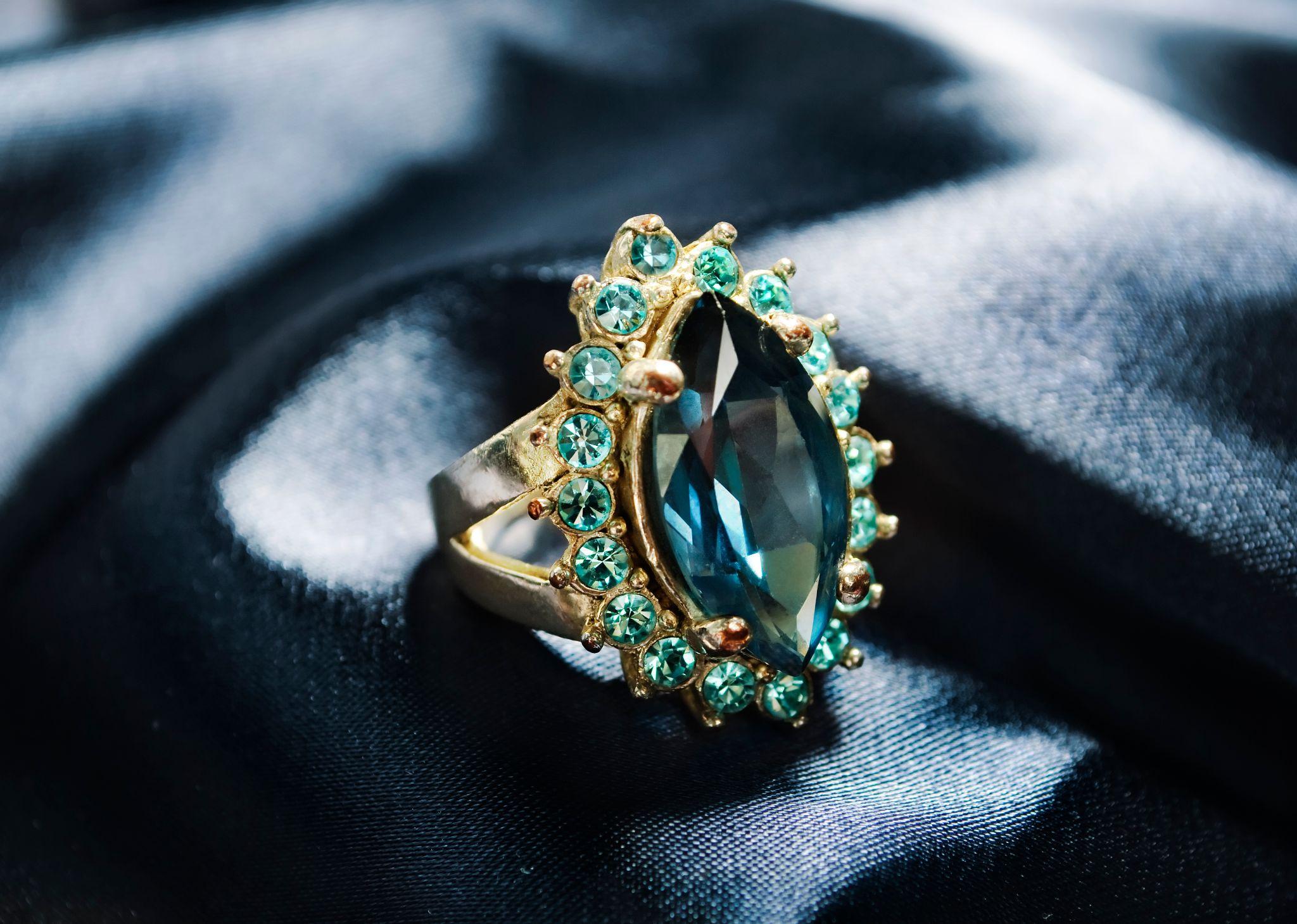
Final Thoughts
Choosing between a vintage and modern engagement ring is a deeply personal decision. Each style has its unique charm and beauty.
Whether you’re drawn to the intricate details of a vintage ring or the sleek elegance of a modern design, the most important thing is that the ring reflects your, and your alone, love story. Take your time, explore your options, and remember, the perfect ring is out there waiting for you! Happy shopping!
GENERAL
Understanding ETL in Managed Data Migration Projects

Data migration sits at the center of nearly every modernization, consolidation, or system-upgrade initiative. Whether an organization is moving to a new ERP, CRM, analytics platform, or cloud environment, the success of that project depends on one thing above all: accurate, high-quality data. Poorly migrated data leads to operational breakdowns, reporting issues, and cost overruns. That is why structured ETL (Extract, Transform, Load) processes form the backbone of every successful migration effort.
While many organizations attempt to migrate data using manual techniques, spreadsheets, or ad-hoc scripts, these approaches rarely scale. They lack governance, validation, repeatability, and auditability. In contrast, structured ETL processes ensure data moves securely, consistently, and in a format that matches the target system. For this reason, many enterprises explore data migration-as-a-service to manage complexity, standardize data handling, and reduce risk during large-scale projects.
Before reviewing the role of ETL, it’s important to understand the environment in which managed migration projects operate. Large organizations deal with multiple legacy systems, inconsistent data definitions, unstructured data sources, and complex relationships across entities. ETL functions as the technical and procedural foundation that organizes this complexity into a predictable, manageable workflow.
What ETL Represents in a Managed Migration Project
ETL refers to the structured process of extracting data from source systems, transforming it into the necessary format and quality, and loading it into a new target system. In managed migration projects, ETL is not just a technical sequence—it becomes a controlled lifecycle supported by governance, validation checks, error handling, and stakeholder collaboration.
Why ETL matters
- Ensures accuracy in the migrated dataset
- Maintains data relationships and referential integrity
- Removes duplicates, inconsistencies, and unused attributes
- Improves data quality before it enters a new platform
- Provides a repeatable workflow for multiple test cycles
These capabilities reduce the risk of downtime, system misalignment, and post-go-live disruptions.
Breaking Down the ETL Stages
1. Extraction: Identifying and Collecting the Right Data
Extraction is the process of identifying which data needs to move and pulling it from legacy systems. This step often reveals gaps, inconsistencies, outdated fields, or missing values.
Key activities in extraction
- Mapping source systems and entities
- Identifying active, relevant, and historical data
- Exporting data while preserving keys and relationships
- Applying filters to remove obsolete or redundant data
- Documenting extraction logic for repeatability
Extraction is also where system owners clarify what truly needs to migrate—and what can be archived instead.
2. Transformation: Standardizing, Cleaning, and Structuring Data
Transformation is the most critical stage of ETL. It shapes raw data into standardized, validated, and structured information that fits the target environment. Poor transformation leads to misaligned fields, lookup issues, broken relationships, and inaccurate reporting after go-live.
Midway through most transformation cycles, organizations also evaluate resource strategies—especially when project teams need additional analysts, QA leads, or migration specialists. In these cases, teams sometimes explore whether to hire dedicated remote staff to support ETL development, validation, or repeat test cycles.
Key transformation activities
- Cleansing data to remove errors or duplicates
- Standardizing naming conventions, formats, and units
- Enriching data using business rules
- Mapping fields from source to target systems
- Establishing reference data and lookup values
- Applying validation logic to catch inconsistencies
- Building transformation scripts that support multiple cycles
Transformation ensures the target system receives clean, structured, and usable data.
3. Loading: Moving Data into the Target System
Once the transformation is complete, the final step is loading the cleaned data into the target environment. This stage must be precise, controlled, and optimized to avoid performance issues or load failures.
Key activities in loading
- Sequencing loads to respect entity dependencies
- Using bulk-load APIs or staging frameworks
- Validating successful loads and identifying rejected entries
- Reconciling record counts against extraction outputs
- Running post-load validation scripts and business rule checks
- Documenting issues for the next migration cycle
Loading must also be repeatable, as migration projects include multiple test iterations before the final cutover.
Why ETL Requires Rigorous Governance
Successful managed migration projects rely on structured governance to maintain quality and avoid data discrepancies. A single incorrect transformation rule or missing reference table can cause cascading errors after go-live.
Governance practices that strengthen ETL
- Version control for scripts and data maps
- Review cycles between business and technical teams
- Automated validation scripts for each stage
- Full audit trails for extraction and loading
- Clearly documented exceptions and resolutions
- Rules for data ownership and approval
Governance ensures the migration can withstand audits, system reviews, and post-go-live troubleshooting.
ETL in Multi-Cycle Migration Projects
Large migrations typically run through several cycles: unit testing, system integration testing, user acceptance testing, and finally cutover. ETL processes must be repeatable and adaptable through each cycle.
Benefits of multi-cycle ETL
- Catches data issues early
- Allows incremental refinement of mapping rules
- Ensures all transformation logic is production-ready
- Reduces uncertainty before final migration
- Builds confidence in data quality
By the time cutover arrives, ETL processes have been tested multiple times, minimizing surprises.
Common ETL Challenges and How Managed Migration Teams Solve Them
1. Inconsistent data across legacy systems
Migration teams perform profiling, run data-quality checks, and establish cleansing rules that unify fields across sources.
2. Heavy customizations and irregular formats
Special transformation logic is created to handle unique data types, legacy fields, or custom workflows.
3. Misaligned business definitions
Business users and technical teams collaborate to define standardized naming conventions, taxonomies, and data ownership.
4. Broken relationships or missing reference values
Lookup tables, keys, and dependencies are validated repeatedly to prevent referential integrity issues.
5. Performance issues during load cycles
Teams optimize load sequencing, indexing, and batching strategies to improve efficiency.
These challenges highlight why managed experts and structured ETL frameworks are essential.
Conclusion
ETL sits at the core of every managed data migration project. It ensures that extracted data is accurate, transformed into clean and standardized formats, and loaded into the target system with complete integrity.
Without disciplined ETL processes, migrations risk producing inconsistent reporting, operational disruptions, and long-term system issues. With the right extraction logic, transformation rules, governance, and loading sequences, organizations achieve a smooth transition to new platforms—and build a reliable foundation for future analytics, automation, and digital initiatives.
GENERAL
Functional Medicine Laboratory Test Explained: Root-Cause Panels Beyond Basic Labs
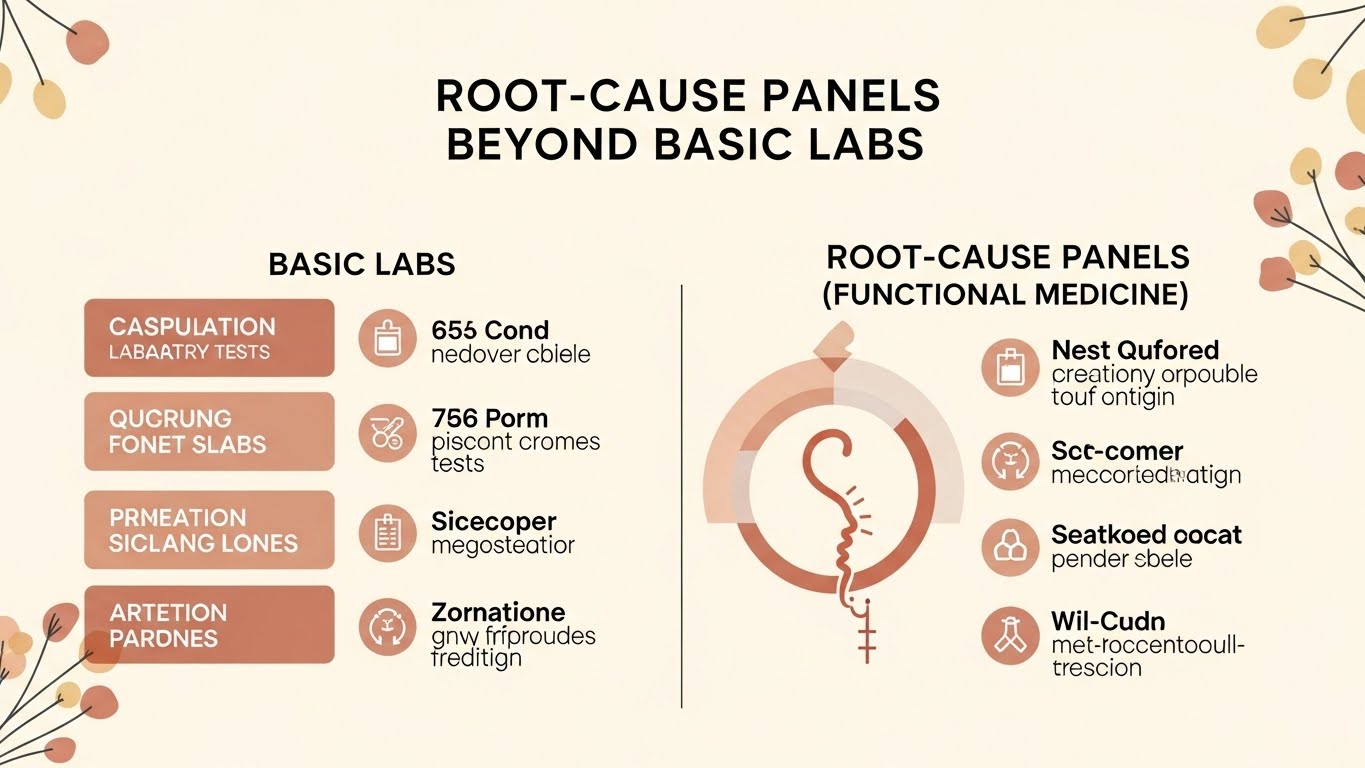
Persistent fatigue, digestive discomfort, or simply not feeling well: these conditions remain undiagnosed and unknowingly become a part of life. The result is a hindrance in reaching your full potential as the body is busy coping with the issues.
The key to solving the problem is right identification. Where conventional lab reports come out to be normal, it is the functional medicine lab tests that help uncover the root cause of unexplained feelings of not being well. Does the term ‘functional medicine’ sound new to you? Or have you heard it but are unsure what it actually means? We explain the details here while relating how it upgrades the quality of life. Scroll down to know.
What is Functional Medicine?
Functional medicine is a root cause based approach to healthcare. Instead of only treating symptoms, it focuses on why a health issue is happening. It achieves this by understanding how different systems of the body, such as the gut, hormones, immune system, metabolism and genetics, are connected with each other.
The functional medicine focuses on:
- Impact of the diet, lifestyle, stress, environment and genetics on health
- Individual differences rather than one-size-fits-all treatment
- Long-term healing instead of temporary symptom suppression
Understand this with an example: If a patient faces acid reflux or bloating, the common approach is to treat with antacids. Functional medicine identifies whether the issue is coming from gut infections, poor digestion, inflammation or food sensitivities.
What Are Functional Medicine Laboratory Tests?
Functional medicine laboratory tests are advanced diagnostic tests. They help identify early imbalances and hidden dysfunctions before they turn into disease. Generally, these tests assess:
- Hormonal balance: To identify hormonal imbalances and manage the symptoms concerning heavy and painful periods, infertility, weight gain, migraines and more.
- Gut health: To identify abundance and diversity of harmful and beneficial microbes, including bacteria, viruses, parasites, fungi and others. It helps deal with chronic conditions, skin issues, inflammation, autoimmune disorders and more.
- Genetic tendencies: To recognise the body’s capability to process and metabolise fat and carbohydrate, risk of chronic diseases, optimise power, endurance and recovery, and more. It helps achieve peak fitness, manage weight, improve mental health and more.
- Immune response: To know about compounds (such as food) sensitive to the body and to learn about gut permeability.
- Nutritional profile: To identify the deficiencies of antioxidants, minerals, B-vitamins, digestive support, fatty acids, amino acids, and omega-3, 6, and 9 in the body.
Importance of Functional Medicine Laboratory Tests
The functional medicine approach plays an important role in achieving well-being for the individual. Here is how the approach works beyond the basic lab tests to help patients feel good:
Helps Uncover Root Causes of Chronic Symptoms
Functional medicine lab tests are useful for people dealing with chronic medical conditions such as chronic fatigue, digestive problems, autoimmune conditions or unexplained symptoms. These tests provide insight into more detailed aspects of the body at the foundational level. Interpreting them offers enough information to handle the mentioned problems.
Detects Issues Missed by Conventional Testing
The functional medicine lab tests reveal underlying imbalances such as nutrient deficiencies, hormonal dysfunctions, hidden infections, or inflammation related triggers. Many of these imbalances may not appear in standard lab ranges. Using these insights helps reduce symptoms and improve body functionality, thus offering relief.
Enable Early Detection and Prevention
The functional medicine lab tests allow timely identification of gut dysbiosis, allergic foods, antioxidant or fatty acid deficiencies, bacterial and fungal toxins, and much more. It involves testing in the scenario of discomfort before the problems progress into more serious conditions. The timely interventions, like lifestyle, dietary, or nutritional adjustments, support long-term health.
Guides Personalised and Targeted Interventions
Test results are interpreted by practitioners in combination with various individual aspects, including but not limited to existing lifestyle, previous medical history, previous drug responses, symptoms, and other details. Subsequently, the professionals develop a tailored plan based on individual needs to provide relevant and measurable interventions.
Tracks Progress and Treatment Effectiveness
Further insights through follow-ups about the personalised plans ensure the effectiveness of the suggested modifications. Depending on the progress and results, the adjustments can be made. Hence, it supports a proactive and evidence-based approach to health management.
Comparison Between Standard Laboratory Tests and Functional Medicine Laboratory Tests
The differences between standard or conventional laboratory tests and functional medicine laboratory tests are as follows:
| Parameter | Conventional Laboratory Tests | Functional Medicine Laboratory Tests |
| Primary focus | Diagnosis of existing disease and acute conditions | Optimising functional well-being and early imbalance detection |
| Approach to health | Reactive, i.e., it involves taking action once disease markers appear | Proactive, i.e., identification of the early signs of dysfunction before disease develops |
| Personalisation | Limited personal context | Interpreted as per the individual biochemistry, lifestyle, and health goals |
| Examples of tests | Complete Blood count (CBC), lipid panel, basic thyroid tests, and others | Gut health tests, hormone panels, nutrient status, and more |
| Outcome | Confirms presence or absence of disease | Guides targeted interventions to maintain and improve health |
Conclusion
Functional medicine laboratory tests offer comprehensive and deeper insights into the body’s functionality. They allow early diagnosis and personalised intervention to offer relief from discomforts that are challenging to understand with conventional tests. The functional medicine focuses on gut health, nutrition, hormones, immune response, and genetic tendencies, among others, to identify the root causes. Also, it works on a proactive approach, helping the individual feel better and confident.
GENERAL
Quick Enrollment Steps for Your Next MyCPR NOW Course
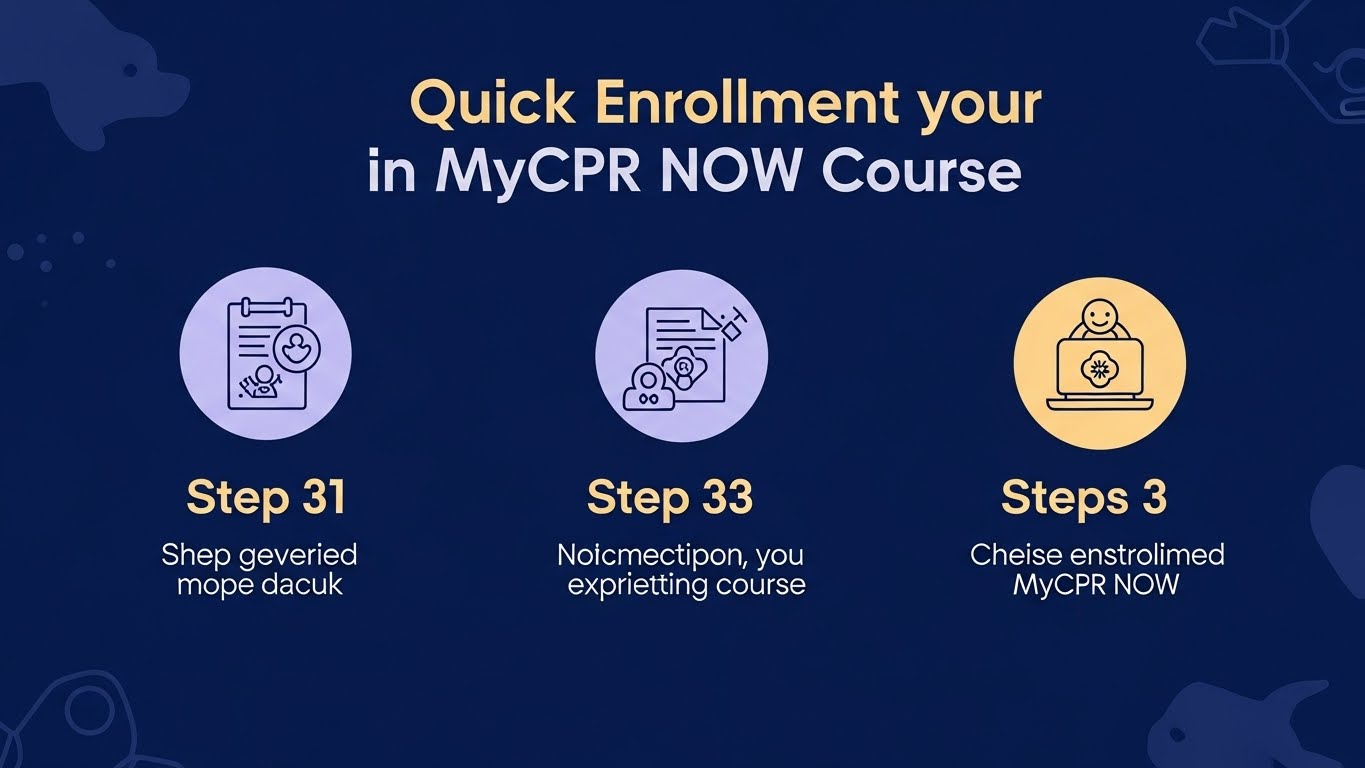
When it comes to getting certified in CPR, First Aid, or BLS, MyCPR NOW makes the process quick, easy, and accessible. Whether you’re a student, caregiver, or healthcare worker, enrolling in a certification course has never been simpler. Below, we’ll walk you through the quick and easy steps you need to take to get started with your next MyCPR NOW course.
Step 1: Visit the MyCPR NOW Website
The first step to enrolling in a MyCPR NOW course is to visit the official website: MyCPR NOW. On the homepage, you’ll find a clean and user-friendly interface that will guide you to the courses you need.
Whether you’re looking for CPR certification, First Aid, or more advanced courses like BLS (Basic Life Support), everything is clearly listed, so you can easily find the course that suits your needs.
Step 2: Choose the Right Course for You
Once you’re on the site, you’ll need to browse through the available courses and select the one that best fits your needs. MyCPR NOW offers several certifications, including:
- CPR
- First Aid
- CPR + First Aid
- CPR + First Aid + Bloodborne Pathogens (BBP)
- BLS
- Pet CPR + First Aid
Depending on your profession or personal requirements, you can choose a single certification or a combination. For example, if you’re a healthcare professional, you might need BLS certification, while a teacher or caregiver may only need CPR + First Aid.
Step 3: Create an Account (Optional)
Creating an account is optional, but it offers several benefits. By registering, you can track your progress, access your courses easily, and receive your certification upon completion.
To create an account:
- Click on the “Sign Up” or “Create Account” button.
- Enter your basic details, including your name, email, and preferred password.
- You can also register via social media accounts for even quicker access.
Once your account is created, you’ll have access to your dashboard, where you can start your course and track your progress as you move through the material.
Step 4: Make Your Payment
After selecting your course, you’ll be directed to the payment page. MyCPR NOW offers flexible payment options, including credit/debit cards and other secure payment methods.
The cost of each course varies depending on the certification you choose, but there are often discounts or bundles available if you’re enrolling in multiple courses. Rest assured, the payment process is fast and secure, ensuring your personal information is protected.
Step 5: Start Your Course
Once your payment is complete, you can immediately begin your course. You’ll gain 24/7 access to the course materials, which include interactive videos, slides, and quizzes.
The courses are self-paced, meaning you can study at your own convenience and revisit any section as needed. Whether you prefer to learn in the morning, at night, or over weekends, MyCPR NOW makes sure the learning process fits into your busy schedule.
Step 6: Complete the Exam
At the end of each course, there will be an exam that tests your knowledge and ensures that you’ve learned the necessary skills. Don’t worry about time limits; the exams are designed to give you the flexibility to complete them at your own pace. To pass, you generally need to score at least 80%.
If you don’t pass on your first try, MyCPR NOW allows you to retake the exam at no extra charge. This ensures you have every opportunity to succeed and obtain your certification.
Step 7: Receive Your Certification
Once you pass the exam, you will receive your certification immediately. MyCPR NOW will email you a digital certificate, which you can print or save for your records. The certification is generally valid for 1 year, after which you may need to renew it depending on the course and your employer’s requirements.
Step 8: Keep Your Skills Up to Date
After receiving your certification, it’s important to stay updated with any new techniques or guidelines. MyCPR NOW offers refresher courses or renewal options so you can keep your knowledge fresh and continue to provide life-saving assistance when needed.
Why Choose MyCPR NOW?
MyCPR NOW offers a variety of benefits that make the enrollment and learning process as seamless as possible:
- Self-Paced Learning: Study on your own time, at your own speed.
- 24/7 Access: Learn anytime, from anywhere, and complete your course at your convenience.
- Interactive Learning: Engage with videos, slides, and quizzes for a comprehensive learning experience.
- Retake Exams for Free: If you don’t pass the first time, you can retake the exam at no additional cost.
- Instant Certification: Receive your digital certificate as soon as you pass the exam.
Final Thoughts
Enrolling in a MyCPR NOW course is simple and efficient. By following these quick steps, you’ll be well on your way to receiving your CPR, First Aid, or BLS certification in no time. Whether you need it for your job, personal life, or community involvement, MyCPR NOW ensures that you have the skills and knowledge to handle emergency situations.
-

 GENERAL2 years ago
GENERAL2 years agoDiscovering the Artistic Brilliance of Derpixon: A Deep Dive into their Animation and Illustration
-

 Posts2 years ago
Posts2 years agoSiegel, Cooper & Co.
-

 HEALTH2 years ago
HEALTH2 years agoTransformative Health Solutions: Unveiling the Breakthroughs of 10x Health
-

 Lifestyle2 years ago
Lifestyle2 years agoPurenudism.com: Unveiling the Beauty of Naturist Lifestyle
-

 FASHION2 years ago
FASHION2 years agoThe Many Faces of “λιβαισ”: A Comprehensive Guide to its Symbolism in Different Cultures
-

 Lifestyle2 years ago
Lifestyle2 years agoBaddieHub: Unleashing Confidence and Style in the Ultimate Gathering Spot for the Baddie Lifestyle
-

 Entertainment2 years ago
Entertainment2 years agoGeekzilla Podcast: Navigating the World of Pop Culture, Gaming, and Tech
-

 Lifestyle1 year ago
Lifestyle1 year agoSandra orlow: Unraveling the Story of an Iconic Figure
